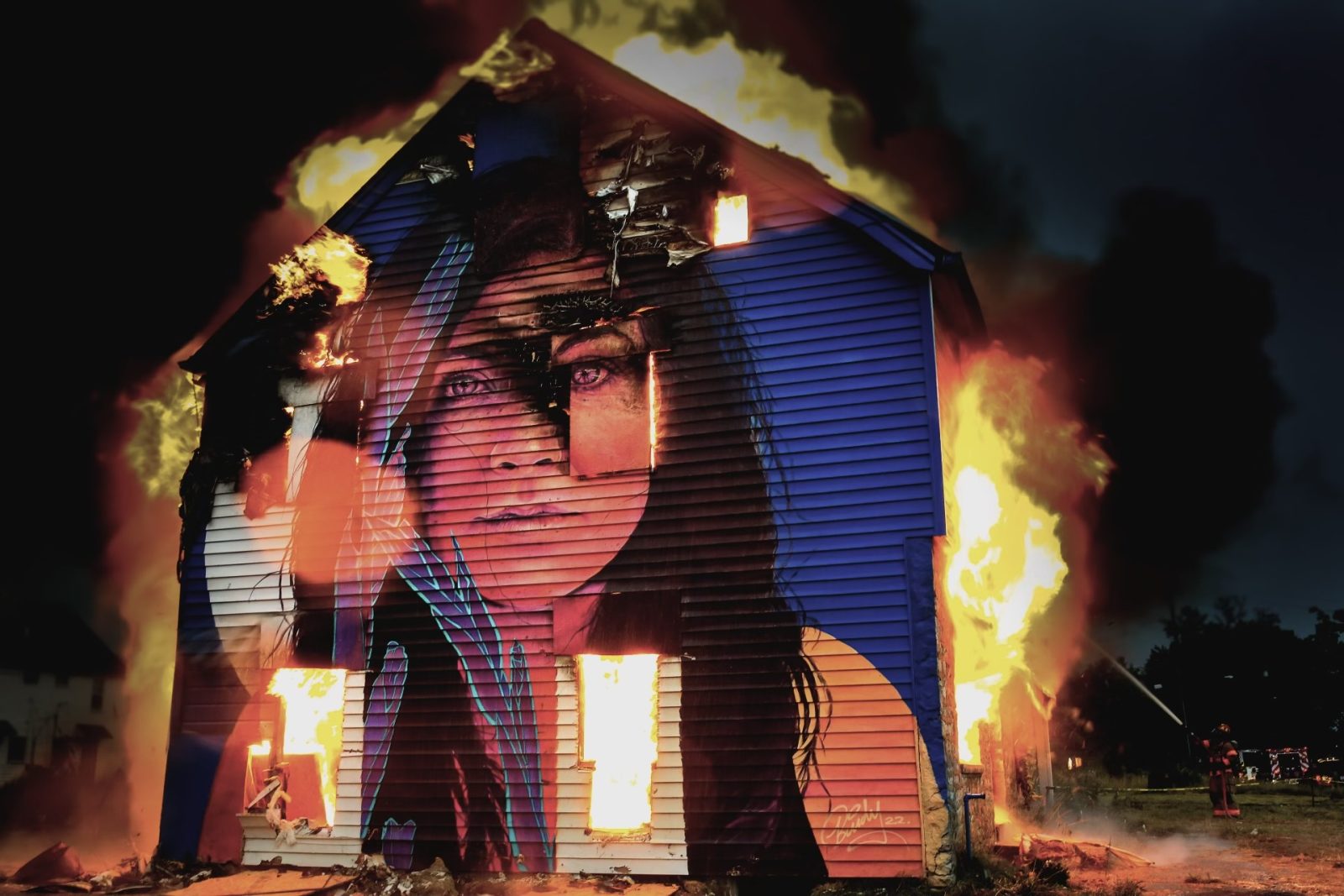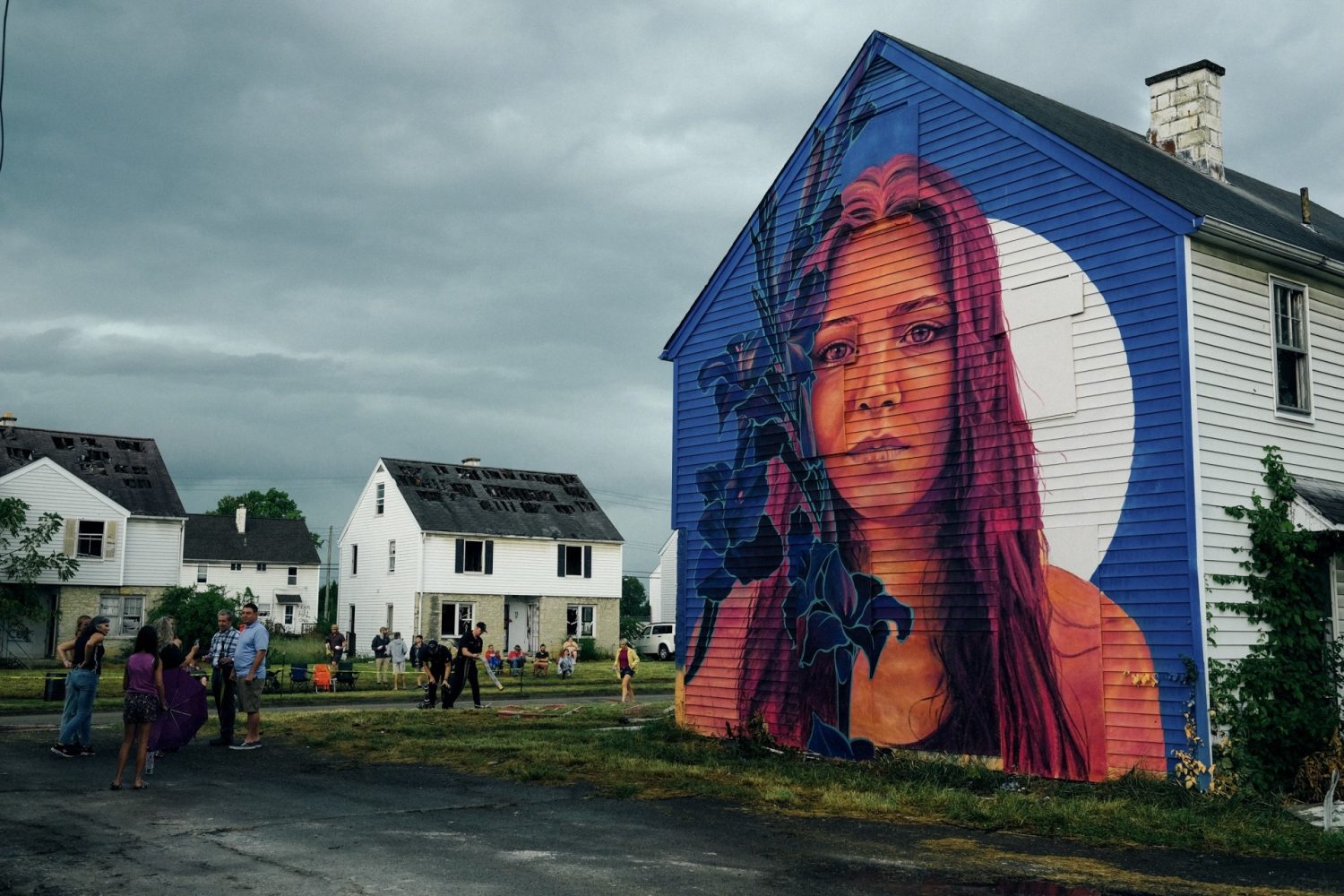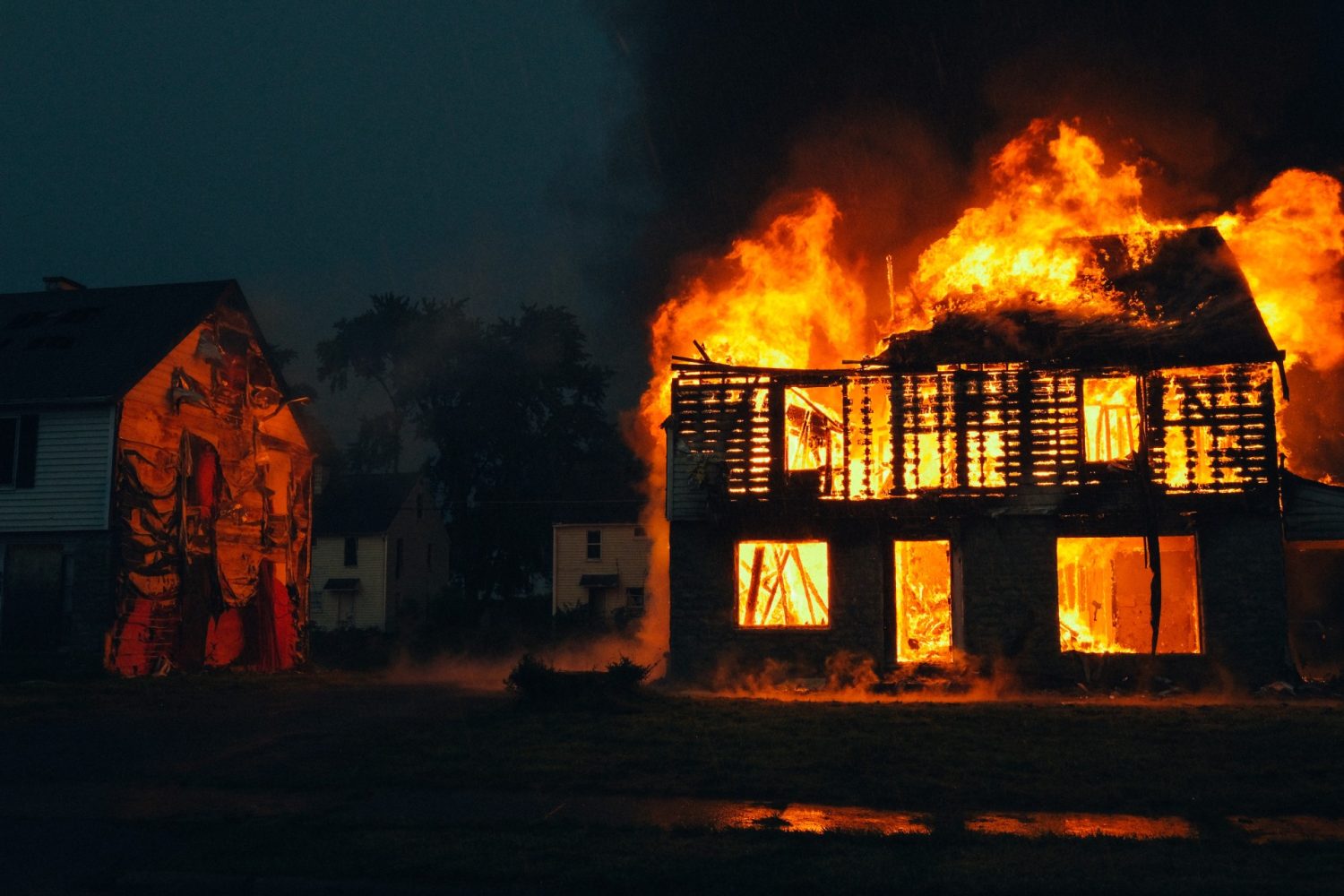Abandoned Whitehall home burned down as part of new performance art piece

“Watch it burn.”
This is the phrase that appeared in bold, black font on a flier for a new performance piece from Columbus muralist Mandi Caskey, who goes by Miss Birdy as an artist.
And in an age of purposeful misdirection and clickbait-driven titles, Caskey’s work, named “Seeds Sown in Fire,” delivered exactly what it promised.
BROUGHT TO YOU BY
On Aug. 20, over 100 people gathered to watch as a derelict Whitehall home burned to the ground. The house was located within the condemned Whitehall neighborhood of Woodcliff Condominiums, located at the corner of Broad Street and Hamilton Road.
Caskey, a member of the nonprofit arts group Catalyst, was already involved in the neighborhood, as the group partnered with the City of Whitehall to paint many of the buildings–which will be demolished to make way for a new residential development–a variety of vibrant colors.
When she discovered one of the buildings was being used in a deliberate burn to provide local firefighters which a chance to hone their skills, she couldn’t ignore it.
“They said they were having a practice fire and I said: ‘Oh my God, this my opportunity.’ I asked if I could paint the building they planned on burning, and the City called the Fire Chief on the spot to approve it,” Caskey said. “The Fire Department was nothing but excited. I didn’t think it would be that easy.”
For “Seeds Sown in Fire,” Caskey painted the building that was set to be burned with the face of a woman, and another nearby home with the face of another woman. The fire, which was set by firefighters after cordoning off a radius and making sure the home would fall inward, burned so hot that it melted the mural on the adjacent home, which was part of Caskey’s plan.


“I honestly didn’t know if it was going to work, but it played out perfectly,” she said.
Caskey said the piece speaks to not only the current place of women in society, but also the idea of permanence in art, something she grapples with as a creator of murals and other art that occupies public spaces instead of a gallery wall.
“With today’s art circuit it’s more or less like we have to have everything preserved, but as a street artist I’m on the opposite end of things,” she said. “I loved the idea of creating something and watching as it was destroyed right away.”
Want to read more? Check out our print publication, (614) Magazine. Learn where you can find a free copy of our new August issue here!
BROUGHT TO YOU BY



